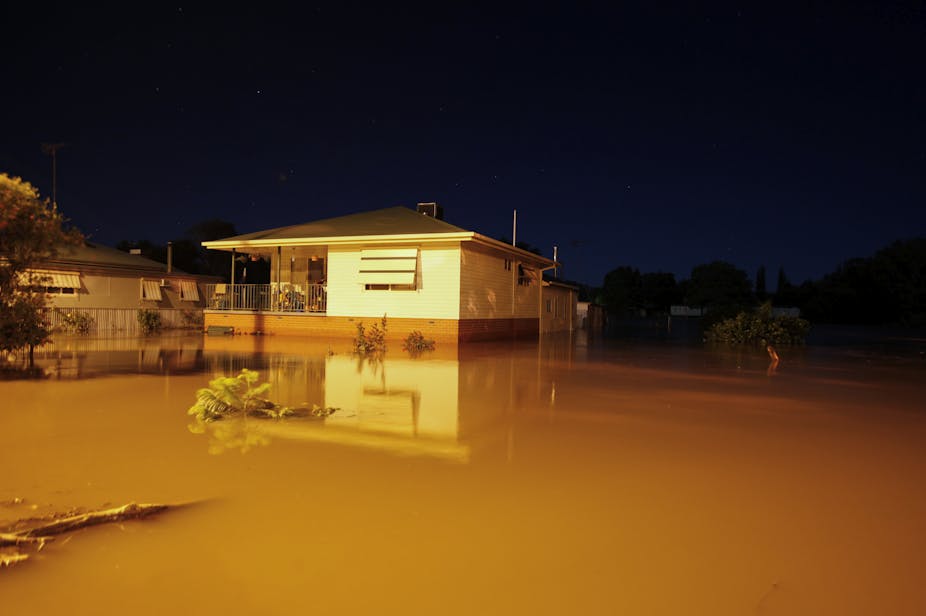Clearing vegetation in Victoria’s waterways to reduce flood impacts is one of the more ludicrous proposals to emerge from any modern Australian government. On March 6 2012, the Hon. Peter Walsh, Minister for Water, was reported as supporting this approach, based on a report of the “Inquiry into flood mitigation infrastructure in Victoria” by the Environment and Natural Resources Committee. This report has not yet been tabled in the Parliament of Victoria.
Clearing trees along watercourses is based on the simplistic notion that they impede the flow of water and if removed will enable flood waters to rush away more quickly. This knee-jerk idea fails on every level: it does not mitigate flooding, there are huge perverse impacts and it will not gain federal regulatory approvals.
In enabling water to move more quickly, channelising rivers will simply move the water more quickly, exacerbating flooding downstream (for instance, around Swan Hill in the Minister’s electorate).
Trees hold sediment together along rivers. If they are removed, river channels to will migrate locally, silt up down river and cause more problems than it solves.
The solution to floods is not making water flow faster. Rather, it is to slow it down, store this water over a larger area and release the water gradually and safely.

Removing indigenous vegetation is an antiquated approach to flood management that has had and would have many perverse environmental impacts. For example, in Victoria, past programs to remove dead trees (snags) from river channels removed habitat for native fish and contributed to the decline of species like the threatened Murray and Trout cods.
Our rivers are among the nation’s most degraded ecosystems, and are home to many threatened species and ecological communities. In northern Victoria the rivers often have the only major remaining forest corridors.
Vegetation removal would be challenged under Victorian and Federal environmental legislation. As with the Victorian Government’s ham-fisted attempts to reintroduce cattle grazing into the Victorian Alpine National Park, such an environmentally retrograde action would certainly fail to gain necessary approval under the Commonwealth Environment Protection and Biodiversity Conservation Act (1999).
There are many more sensible flood mitigation alternatives that provide multiple benefits for people and the environment. Victoria should actively consider programs similar to those in Europe, the USA and China to re-engineer and set back levee systems to “give rivers room” to flood safely. These “soft path” measures manage floods by restoring floodplains to catch and gradually release flood peaks.
These measures are safer, cheaper, can be implemented incrementally and provide substantial co-benefits for people. In other words, they are putting more trees along rivers, not removing them. Restored floodplains in these countries are used to grow timber, provide pasture for livestock, restore fisheries, establish recreation businesses, supply clean water and recover flora and fauna populations. In these countries, based on these measures, the local economies have been diversified and incomes have risen.

Many of these countries also have periodic relicensing systems to ensure that operators of dams and levee banks have to regularly review and upgrade water infrastructure to meet the latest safety, social, environmental and economic standards. If infrastructure doesn’t measure up, it must be removed.
There have been two innovative proposals in the past to redesign flood levee systems in northern Victoria to set back levees and restore floodplains. In the last one, the Goulburn-Broken Catchment Management Authority proposed a Lower Goulburn Floodplain Rehabilitation Scheme. It would redevelop the century-old levee system along a 156 km stretch of the Goulburn River between Shepparton and Kanyapella, where floods of a size expected once every ten years (on average, without climate change) currently break the levee banks.
A leveed floodway of 10,500 ha was proposed through the acquisition of up to 9,700 ha of land from the relevant landholders. Tragically, vested interests stopped this plan a decade ago. Now towns and farmers in the region are subject to ongoing uncertainty and risk of flooding such in the events of this week.
The question for the Victorian Government today is: do you have the foresight to implement a floodplain restoration and management system that will provide multiple benefits for local communities? Or will you waste everyone’s time and resources attempting an environmentally disastrous channelling of rivers that will create conflict and fail?

